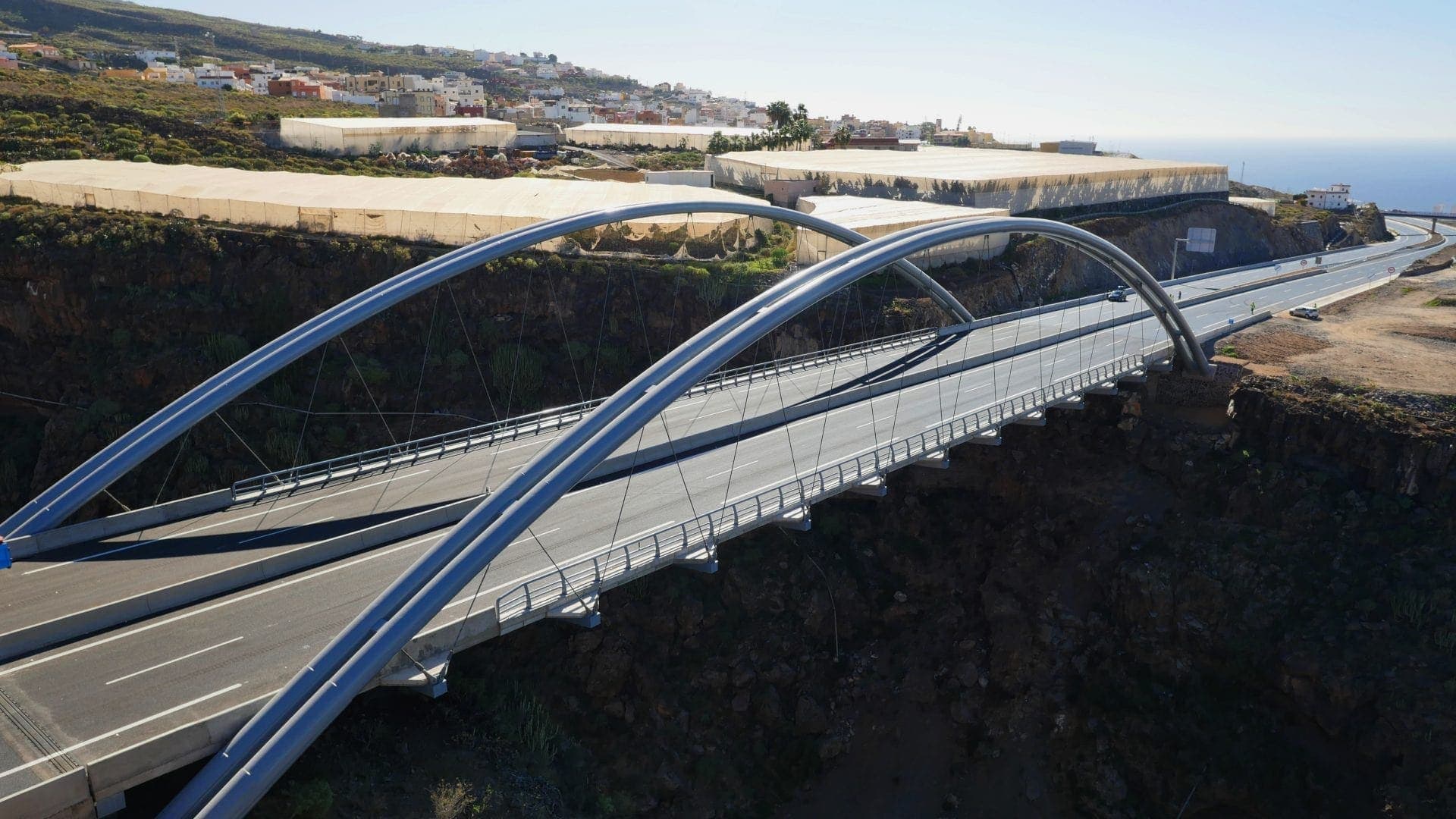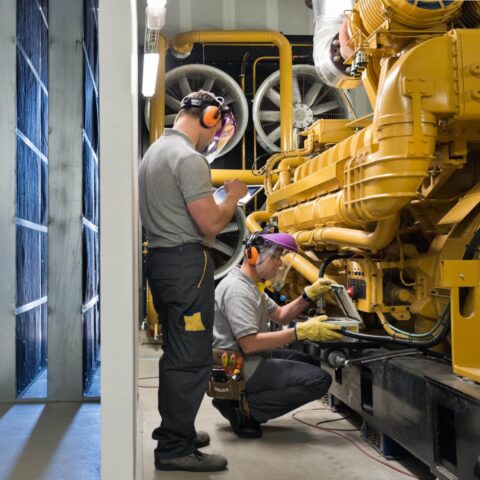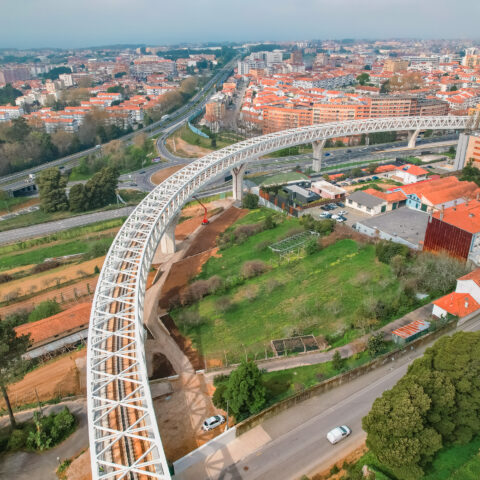The Erques Viaduct is an example of the capacity for coordination and precision of Ferrovial Agroman professionals. In launching its arch and deck, structures weighing in at more than 120 tons were moved in the air. The skills of a team of more than 80 made its construction possible.
It may fall well short of the figures boasted by Justin Bieber or Beyoncé clips, but with more than 13,000 views, the video of the building of the Erques Viaduct is a true star of Ferrovial’s YouTube channel.
And the fact is it’s hard not to feel captivated by these images, which show the feats of coordination and precision called for in hoisting and assembling the arches and deck of this bridge, which spans the Erques Ravine in the south of Tenerife. “All of the manoeuvres were studied down to the smallest detail”, explains Pablo Gallegos, Structural Works Manager on the viaduct. The efforts recorded by the cameras in March 2015 marked a milestone in a construction project which took its first steps seven months earlier.
First steps
In August 2014, a workshop in Carbonara Scrivia, in the north of Italy, began bending the steel tubes which would make up the viaduct arches, and a factory in Hamburg started work on the stay cables which would hold up the viaduct deck. The assembly of the arches and the entire metal structure of the bridge was carried out in a workshop in Seville.
At the same time, digging and foundation works were initiated on the slopes of the Erques Ravine, a protected natural environment. “We could not access the channel because it is environmentally protected, and that significantly complicated the whole building process”, notes Pablo.
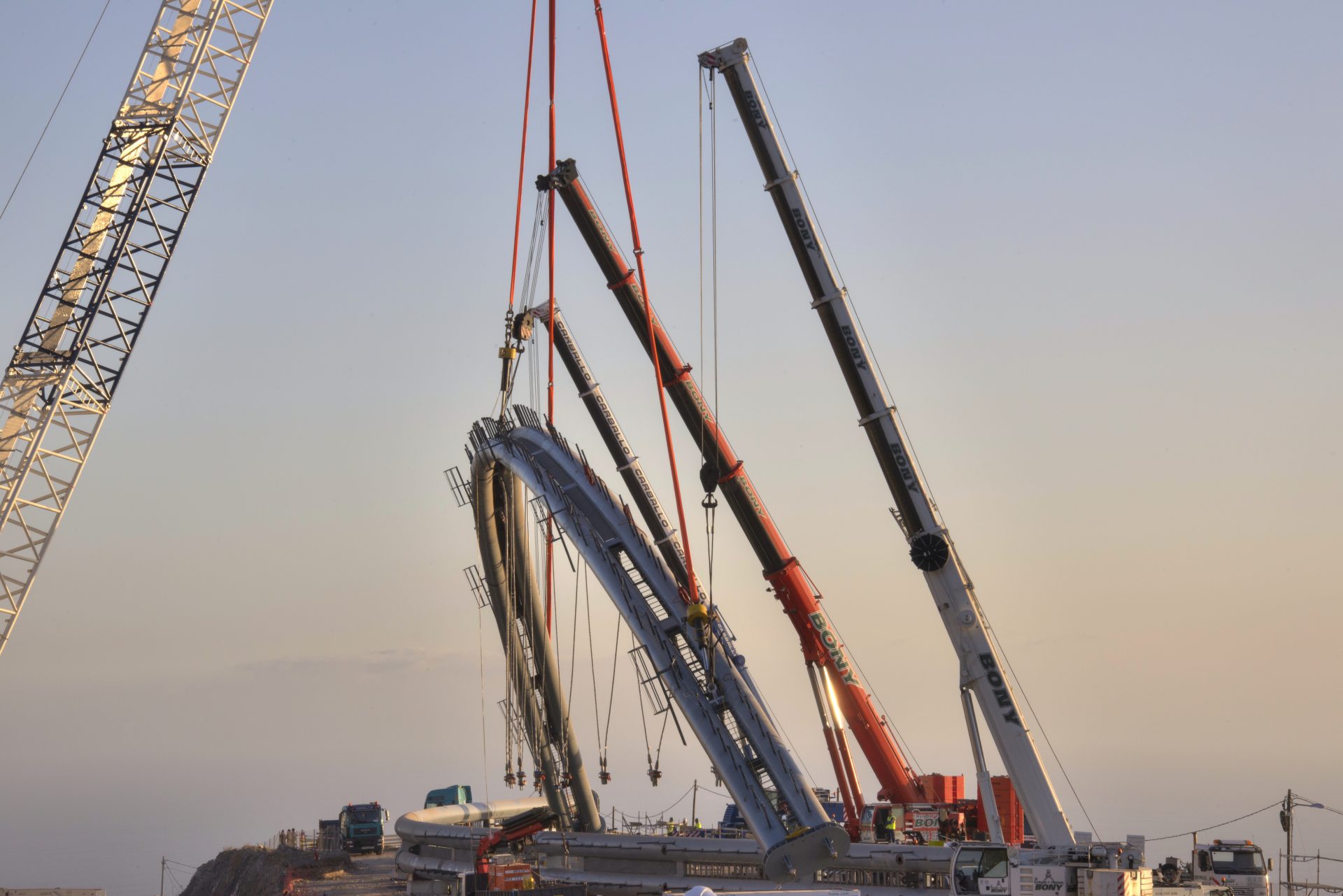
The structure arrived in Santa Cruz de Tenerife by boat and was transported to Erques by special transportation. The works team were delivered the structure in pieces: two abutment beams, 12 transverse beams, 78 longitudinal beams and 3 keystones per arch. They were responsible for carrying out the assembly works and the final welding of the arches and the deck.
Each one of the arches is 110 metres long and 16 metres high. They are double arches; that is to say, they are made up of two tubes joined together by diaphragms. These diaphragms constitute the joints from which the stay cables are hung. The deck is made up by a network of beams. In the case of the Erques Viaduct it was split into four spans to facilitate its launching.
We drafted an operational manual, structuring the different manoeuvres. We calculated everything in detail
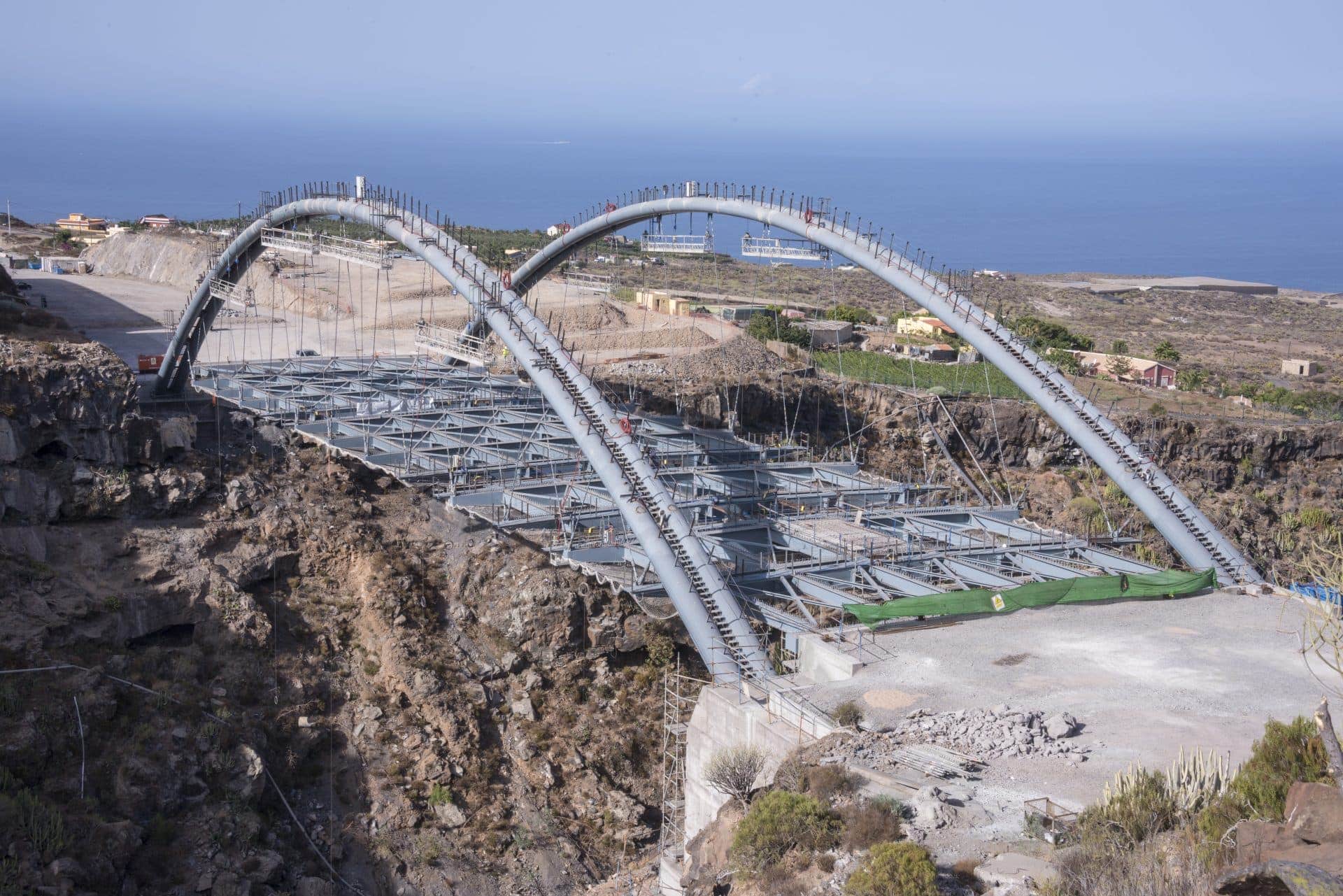
Launch
Once the assembly and welding work had been concluded, the launch got underway; the most spectacular part of the construction process. It is not hard to imagine the level of precision required to raise, hoist and fit 120-ton structures. Just one stat: in one sequence of raising and hoisting the arches, three self-propelled mobile cranes were in operation at the same time, synchronised with two truck cranes. “We drafted an operational manual, structuring the different manoeuvres into phases and sequences, so that nothing would be left to improvisation”, states Pablo.
Firstly the arches were launched. Once fitted they were filled with expansion concrete devised by Ferrovial Agroman as part of the INVHERTA RD&I project. This concrete expands when it hardens, which means you can do without traditional fixing bolts – steel parts welded to the structure and sunk into the concrete to guarantee that both materials work together.
For Pablo Gallegos, its production and use on the works was one of the project’s main challenges. “Once the parameters for the concrete had been set in laboratory conditions, we had to design a production system that would allow us to manufacture quantities in line with the final supply, translate its production and pouring at a scale of 1:1, and make it a reality “out there”, on site, in an environment in which new technical and logistical difficulties can arise”, he explains.
Following the launch of the arches work commenced on the deck. The transverse length of the four spans in which the deck was divided was greater than the clear width between the inside faces of the two arches. This forced the Ferrovial Agroman team to tilt them 30º with regard to their longitudinal axis once they had been raised up by the crane, lower them, and get them back to horizontal in order to locate them in their final position. Once the spans had been fitted, the stay anchorages that connect with the stay cables were installed.
Concluding the works
Once the metal structure was complete the lattice girder floor sections were fitted and then filled with concrete. This final job was carried out in six phases in order to put equal strain on the two arches. Once the concrete had acquired the required resistance, work started with weighting and regulating the stay cables, water-proofing and paving.
In December 2015 the load tests were carried out: 12 loaded trucks were arranged on each of the two carriageways to check the degree of inelastic deformation. The infrastructures passed the test with flying colours. On 18 December it was opened to traffic, thereby culminating 16 months of work involving more than 80 on construction alone.
The Adeje-Santiago del Teide Motorway
The Erques Viaduct forms part of the new Adeje-Santiago del Teide Motorway, being carried out by a consortium led by Ferrovial Agroman. This infrastructure completes the Tenerife island ring-road in the south-east of the island. More than 10,000 drivers use it every day and will see their travel time drop by more than 20 minutes.
The project has included the construction of 15 other viaducts, 12 overpasses, 30 underpasses and three artificial tunnels. Protecting the environment has been a constant concern in the project. 100% of the material originating from the digging was reused to manufacture concrete, asphalt and riprap, native species were replanted and invasive species were eliminated.
Effort, coordination, precision. What is certain is that while a few spectacular images can draw attention to an infrastructure project, what is really amazing is the work behind them.
